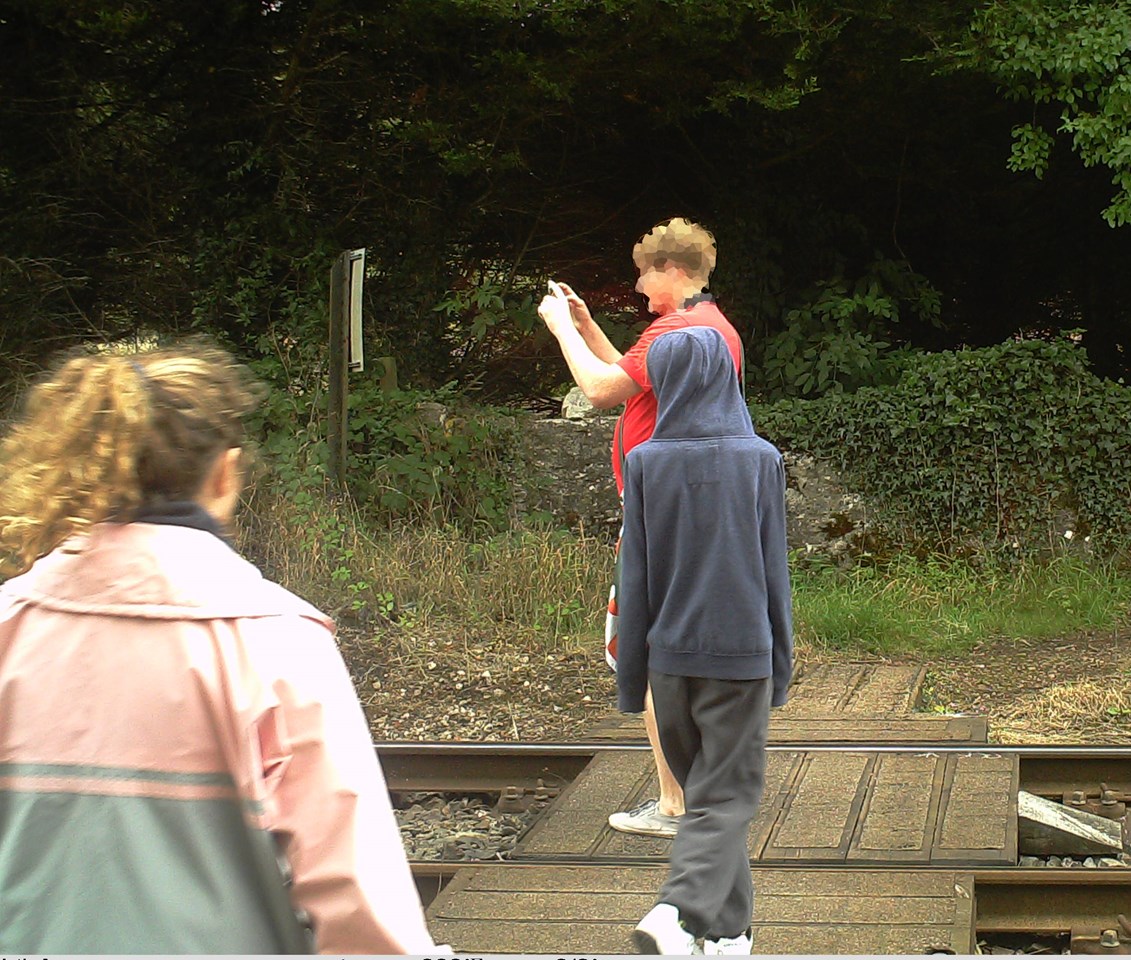Wednesday 28 Sep 2016
Glasgow residents putting lives at risk by using phones on transport network
- Region & Route:
- Scotland’s Railway: Scotland
New figures from Network Rail¹ reveal that nearly a third (29 percent) of young adults in Greater Glasgow report a near miss or accident when using their mobile phone around the transport network.
A further 41 percent report using their phone when getting on or off a train and 38 percent admit they use their mobile when crossing a road, with some even admitting to using their phone while using a level crossing.
While Britain still has the safest rail network in Europe, level crossings are one of the biggest public safety risks on the railway. In the last five years there have been more than 70 incidents on level crossings across Scotland involving pedestrians.
Mark Henderson, Network Rail senior community safety manager for Scotland, said: “Many people are aware of the issue of mobile phone distraction for drivers, but it is very worrying that so many young adults admit to putting themselves at unnecessary risk by using their phone when on the railway.
“We are investing more than £100m to improve level crossing safety across Britain, but we also need everyone who uses level crossings to do their bit too. By paying attention to the warnings at level crossings and avoiding distractions, we can all keep ourselves out of harm’s way.”
Network Rail’s level crossing and community safety managers will be raising awareness of rail safety by holding safety events and encouraging young people to stay alert when on the rail network throughout Scotland’s railway over the coming weeks.
The Populus research on phone distraction also highlights 95 percent of under-25s UK-wide own a smart phone and spend twice the amount of time on their mobile than the average user. One in three young adults admits they would be more aware of their surroundings if they ditched their phone for 24 hours. Most spend time checking social media (63%) and surfing the web (44%).
Kevin Clinton, head of road safety at the Royal Society for the Prevention of Accidents, said: “As we advise drivers and pedestrians to avoid becoming distracted when they’re in a road environment, it’s essential that people are also fully aware of what’s happening around them when they use level crossings. Avoid being dangerously distracted by a mobile phone call, texting, using an app or listening to music through your headphones at a crossing so you’re well aware of what the warning lights, barriers and signs are telling you.
“Trains travel so fast that one could reach the crossing before you get to the other side if you cross when it’s not safe, and of course, the train has no chance of stopping or swerving to avoid a collision. Take special care at level crossings on footpaths, bridleways and other rights of way where there are no barriers or railway staff.”
To find out how to stay safe when using level crossings visit: www.networkrail.co.uk/level-crossings/
-ends-
Notes to editors:
- Populus phone distraction survey of 2000 GB adults, 24-29th August 2016. Surveys were conducted across the country and the results have been weighted to the profile of all adults. Populus is a founder member of the British Polling Council and abides by its rules. Further information at populus.co.uk
Guidance on level crossing use
- Most crossings have a sign and lights or bells that alert you if a train is coming. Many will also have gates that close when a train is coming. If this happens wait until the train has passed
- When crossing tracks at a railway crossing, you should: Stop and look both ways before crossing, listen for the train coming and for warning bells, if there are lights watch for them to flash
- Stand well back from the tracks if a train is going by
- Never try to cross the tracks if a train is coming. It can take up to one and a half miles for a train to come to a complete stop
- Always make sure there are no other trains coming before crossing
Contact information
Passengers / community members
Network Rail national helpline
03457 11 41 41
Latest travel advice
Please visit National Rail Enquiries
Journalists
Network Rail press office - Nick King
Media relations manager (Scotland)
0141 555 4108 / 07515 617073
nick.king3@networkrail.co.uk
About Network Rail
We own, operate and develop Britain's railway infrastructure; that's 20,000 miles of track, 30,000 bridges, tunnels and viaducts and the thousands of signals, level crossings and stations. We run 20 of the UK's largest stations while all the others, over 2,500, are run by the country's train operating companies.
Usually, there are almost five million journeys made in the UK and over 600 freight trains run on the network. People depend on Britain's railway for their daily commute, to visit friends and loved ones and to get them home safe every day. Our role is to deliver a safe and reliable railway, so we carefully manage and deliver thousands of projects every year that form part of the multi-billion pound Railway Upgrade Plan, to grow and expand the nation's railway network to respond to the tremendous growth and demand the railway has experienced - a doubling of passenger journeys over the past 20 years.
Follow us on Twitter: @networkrail
Visit our online newsroom: www.networkrailmediacentre.co.uk

